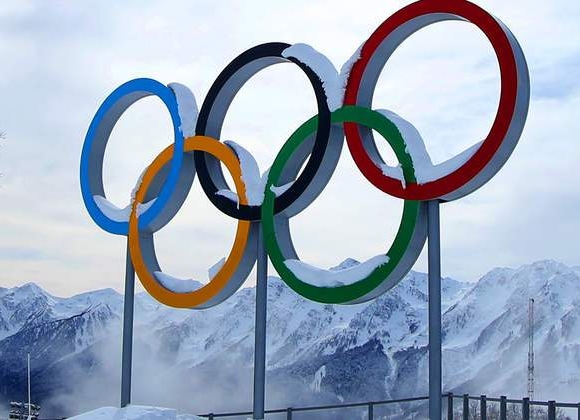★ The Sports Examiner: Chronicling the key competitive, economic and political forces shaping elite sport and the Olympic Movement.★
★ To get the daily Sports Examiner Recap by e-mail: sign up here! ★
≡ INTEL REPORT ≡
A study commissioned by the International Olympic Committee showed potentially good news for the future of the Olympic Winter Games:
“Under these more probable emission scenarios, the majority of potential OWG host locations analysed in this study remained climatically reliable (with the 30 cm snow depth threshold) in the 2020s (68%) and 2050s (56%), with approximately half remaining climate reliable through late century.
“Positively, of the locations that remain climate reliable for the OWG under the more probable mid-emission scenarios for mid- and late century, all of the major global regions that have previously hosted the Olympics North America, Europe (Alps, Scandinavia, Eastern Europe), and Asia are all represented by multiple potential hosts.”
Published in the Current Issues in Tourism journal, the new article, Climate change and the climate reliability of hosts in the second century of the Winter Olympic Games by Robert Steiger (University of Innsbruck, Austria) and Daniel Scott (University of Waterloo, Canada), extends the existing work of both authors on climate impacts on snow conditions for sports.
Scott’s research in 2014 and 2019 showed:
● “[D]epending on the emission trajectory, 10–13 of 21 former OWG host locations will remain climatically reliable by the 2050s. This number will further decline to 8–12 locations by the 2080s.”
● “The [Paralympic Winter Games], scheduled after the OWG in the later part of the winter season (March) is more sensitive to climatic changes with only 8–10 out of 21 former PWG locations will remain reliable in the 2050s and only 4–10 in the 2080s.”
● “These studies show that the number of potential locations to host future Winter Games could be reduced and that it is important to assess climatic reliability in the selection process to ensure reliable, safe, and fair Winter Games.”
The authors note that there is no perfect predictor of what the future of climate is for winter-sport locations, but examined a wider range of possible Winter Games facilities, also looking for better – thicker – snow conditions that will be better in competition situations.
A total of 93 locations identified in Scott’s prior studies as possible winter-sport sites were reviewed an attached map indicated 90 of these:
● 11 in North America (Canada: 6, U.S.: 5)
● 2 in South America (Argentina, Chile)
● 9 in Scandinavia (Norway, Sweden, Finland)
● 24 in Western Europe (Austria, France, Germany, Swiss)
● 16 in Southern Europe (Spain, Italy, Slovenia)
● 14 in Eastern Europe (Bulgaria, Romania, Slovakia, Russia)
● 4 in Western Asia (Turkey, Georgia)
● 3 in Central Asia (Kazakhstan)
● 6 in Eastern Asia (China, Japan, Korea)
● 1 in Oceania (New Zealand)
Of these:
“In the baseline period (1981–2010), 87 of 93 locations (94%) were rated reliable, with six marginally reliable and no location that is not reliable.
“A notable decline of reliable locations can be seen already for the 2020s (2011–2040) period with 57–66 reliable locations (61–71% high to low emission scenario) and 22–30 locations being marginally and 5–6 not reliable.
“The mid-century 2050s period sees a further decline with 45–55 reliable (48–59% high to low emission scenario), 20–28 marginally reliable and 10–28 unreliable locations.
“Two distinct futures are visible in the 2080s. The majority (54) or less than half (46) of potential host locations (49–58%) remain climate reliable in the low and mid emission futures respectively. In contrast, in the high emission scenario the majority (48) of locations are not reliable (52%).”
So there are now, and will be, places to go for future Winter Games held in February. This is true even with the snow-depth requirements increases from 30 cm to 50 cm, but the numbers narrow:
“As with the 30 cm threshold, the majority (53) or less than half (50) of potential host locations (54–57%) remain climate reliable [at 50 cm] in the low and mid emission futures.”
The number of places considered reliable thins in March, when the Paralympic Winter Games is usually scheduled, making that event more difficult. However, Western Asia and North America both looked like good options, even to the end of the century.
The bottom line:
“Positively, with the expanded number of locations that remain climatically reliable for the OWG under the more probable mid-emission scenarios for mid- and late century, all of the major global regions that have previously hosted the Olympics, North America, Europe (Alps, Scandinavia, Eastern Europe), and Asia, are all represented by multiple potential hosts.
“While it is inevitable that climate change will impact the geography and development of winter sports to some degree, a reassuring finding is that even with a diminished pool of potential host locations, with continued adaptation, the Olympic Winter Games can endure as a genuinely global celebration of sport.”
¶
★ Receive our exclusive, weekday TSX Recap by e-mail by clicking here.
★ Sign up a friend to receive the TSX Recap by clicking here.
★ Please consider a donation here to keep this site going.
For our updated, 885-event International Sports Calendar for the rest of 2024, 2025 and beyond, by date and by sport, click here!


























